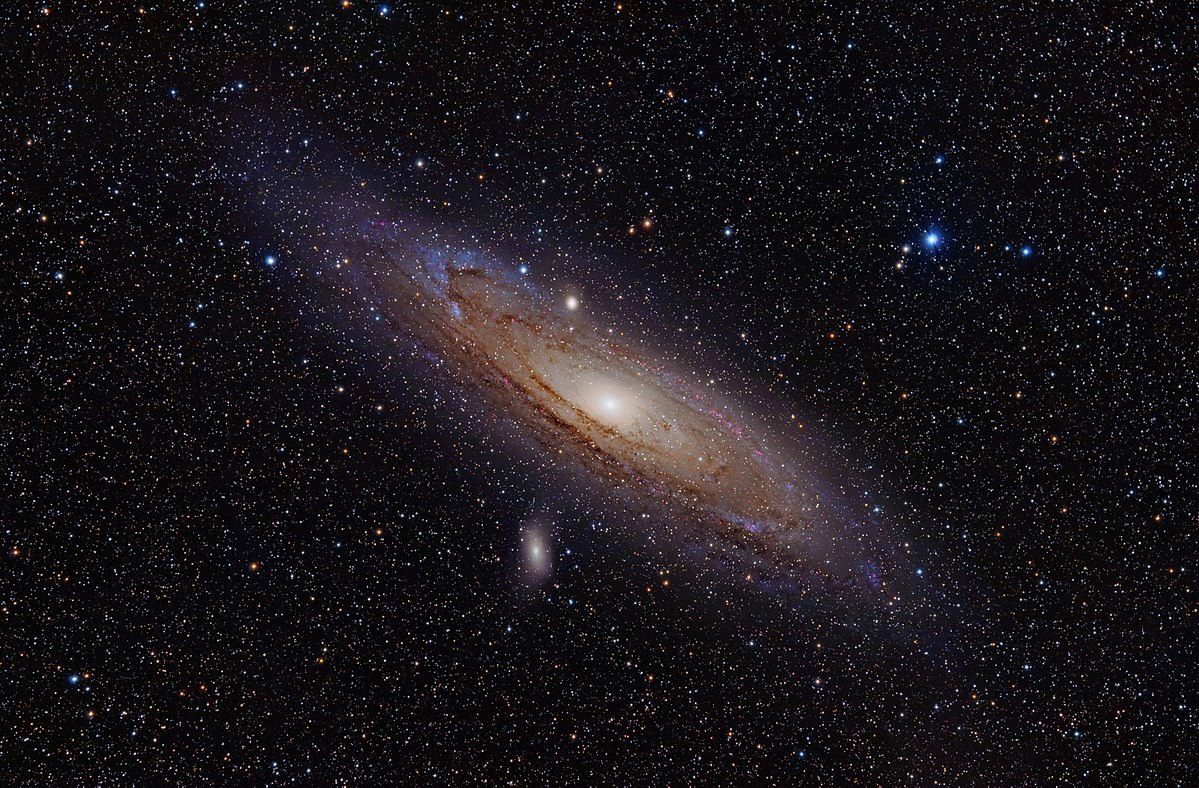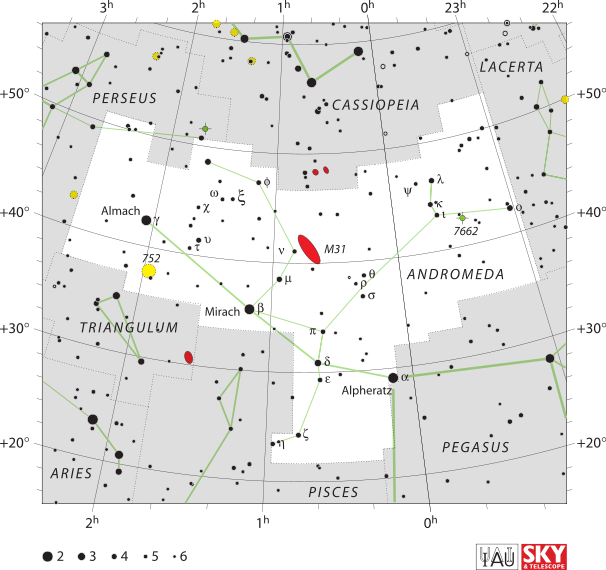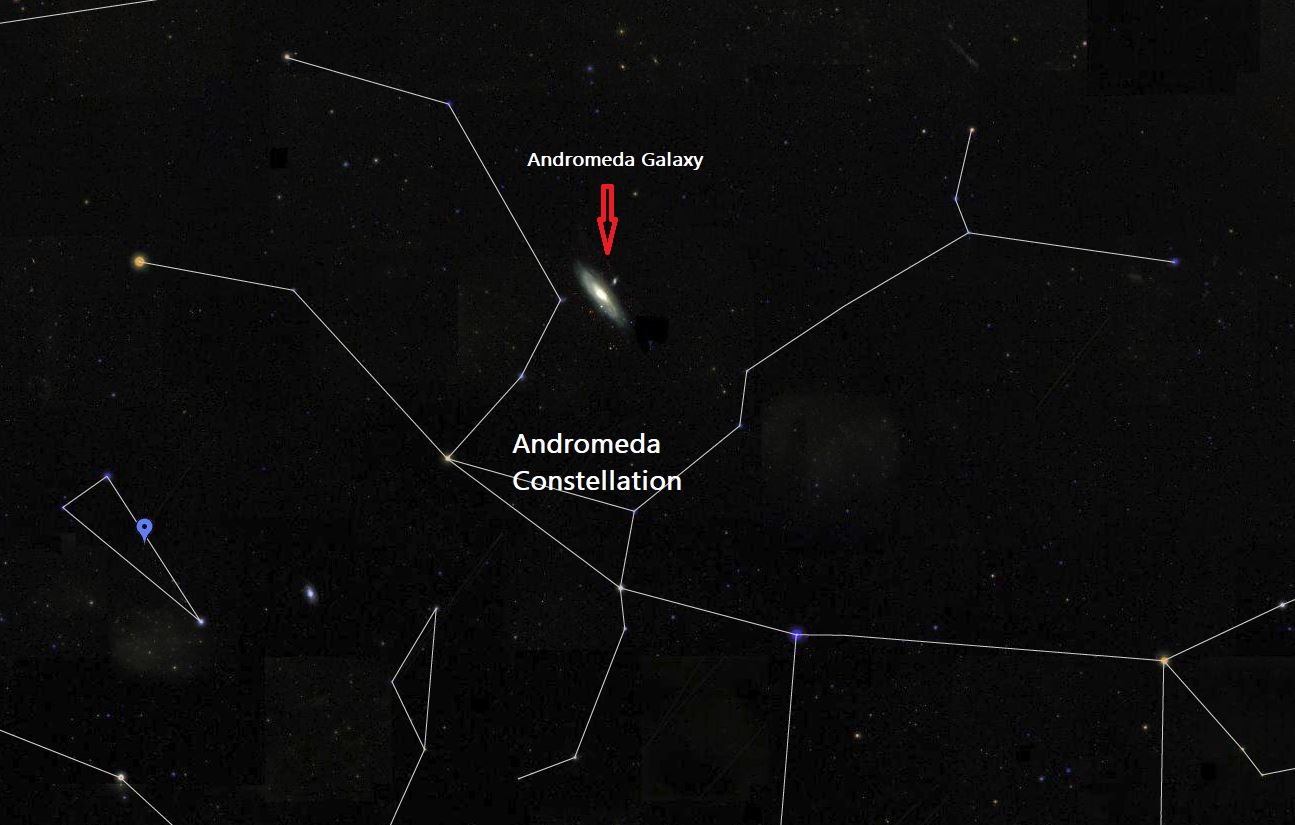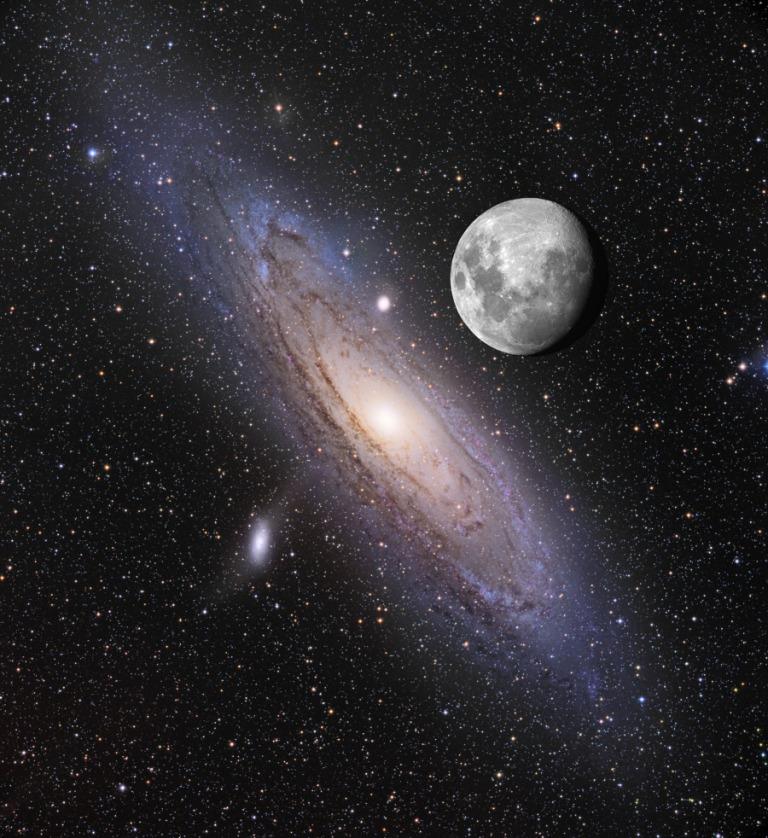Our Nearest Galactic Neighbour The Andromeda Galaxy
From Nebula To Galaxy!
Named after the constellation it is located in, the Andromeda Galaxy for a long time was thought to be a nebula within our galaxy. It is in fact a large spiral galaxy 2.5 million light years from our own Milky Way galaxy! Andromeda is one of the few galaxies that can be seen with the naked eye and it is expected to collide with the Milky Way in about 4.5 billion years!
Cool Facts About The Stunning Andromeda Galaxy!
Known to humans for several thousand years, the Andromeda Galaxy was commonly thought to be a nebula within our galaxy. It wasn’t until the early 20th century that it was discovered that the Andromeda Nebula was a completely separate galaxy from ours! The scientist Edwin Hubble settled the debate in 1925.
- Andromeda Galaxy quick facts;
- Also referred to as NGC 224 and M31.
- Classified as a spiral galaxy.
- It is the nearest large galaxy to Earth, but it would still take you 2 ½ million years, travelling at light speed, to get there! Where’s an intergalactic wormhole when you need one?!
- It spans 220,000 light years from side to side.
- It contains an estimated 1 trillion stars! That’s 2 ½ to 5 times as many as the Milky Way Galaxy!
- There are 14 known dwarf satellite galaxies, the best known being M32 and M110.
- The Andromeda Galaxy is the largest in the local cluster of galaxies, of which the Milky Way is a member, with a mass estimated to be 70-80% greater than ours.
- On account of Andromeda’s orientation being slightly inclined to Earth, it has been possible for scientists, to at least partially, study the structure of the spiral galaxy believed to be similar to our own.
- There are an estimated 460 globular clusters associated with the Andromeda Galaxy; the largest is believed to be the remnant core of a dwarf galaxy that was consumed by Andromeda in the distant past!
- A supermassive black hole resides at the centre of the galaxies nucleus.
- The Andromeda Galaxy is approaching the Milky Way at an estimated 110 kilometres per second (68 mi/s) and is believed to collide with the Milky Way in 4 – 5 billion years to form a much larger galaxy!
How To View The Andromeda Galaxy In the Night Sky!
- With an apparent magnitude of 3.44, it can be seen with the naked eye, but you will need it to be a dark, clear moonless night (during autumn to spring in the Northern Hemisphere)
- Using a star chart, locate the Andromeda and Cassiopeia constellations and the fuzzy ‘cloud-like’ object in between will be the Andromeda Galaxy!
- It will appear several times wider than the Moon, but many times fainter.
- Of course, if you use binoculars or a small telescope this will enhance your view!
- You should be able to make out the two brightest satellite galaxies M32 and M110.
- The Andromeda Galaxy is the most distant objects you can see with the naked eye! Far Out; So Cool!





Andromeda Galaxy
Andromeda Constellation
Night Sky
Andromeda Galaxy
Relative Size



